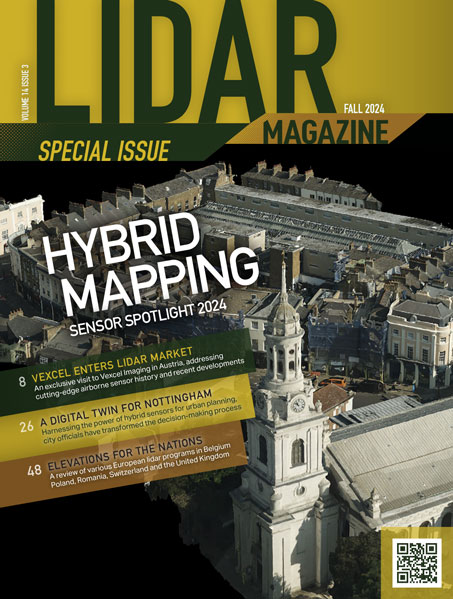Calibrated images are becoming an increasingly integral component of the terrestrial laser scanning data set and for good reason. Faster field operations, faster data transfer, reduced data volume, increased post-processing productivity and improved deliverable quality are all consequences of well -integrated systems yielding calibrated images tightly mapped to the point cloud data. Of course the key to achieving these efficiencies are downstream feature extraction and modeling software designed to properly exploit the synergy between these two data set components.
At first glance, it may seem overstated that the addition of calibrated images to the point cloud data set could yield significant increases across the entire spectrum of field-to-finish operations. In order to demonstrate how such efficiencies are achieved, it is best to step through the processes in reverse. Thus we begin with a demonstration of the synergy between point cloud and calibrated images within the feature extraction and modeling process.
Increased Post-Processing Productivity and Improved Deliverable Quality
Figure 1
Integration of calibrated images and point clouds directly into the CAD design environment provides the CAD operator with an information rich environment. The example of Figure 1 shows a typical topography model extracted from point clouds and calibrated images using TopoDOTTM operating within Bentleys MicroStationTM . The point cloud data is clearly very tightly mapped to the image view of each calibrated image. In this example cross sections of raw point cloud data are shown in the top view, orthogonal side view, overlaid across the DTM and mapped to the perspective view of the imageall at the click of a mouse button. Processing tool suites such as TopoDOTTM can exploit the synergy between calibrated images and point clouds to yield huge gains in post-processing productivity, as well as improved deliverable quality. Our TopoDOTTM processing team has consistently found the inclusion of calibrated imagery with the point cloud data reduces project processing time by 30-40%.
Reduced Data Volume
The introduction of tightly calibrated images within the point cloud data set significantly reduces the spatial density requirements of the point cloud necessary to extract features of interest. This result has been consistent regardless of application – whether long range outdoor topography or close range indoor plant applications. For example, projects which include tightly calibrated images integrated with the point cloud typically only require approximately 5 to 6 million laser points and about six very compact jpeg images per 360 degree scan.
Systems employing only dense point clouds without export of tightly calibrated images typically acquire 40 to 50 million or more points per scan in order to identify and extract features at a comparable level of reliability. As one might expect increased point cloud density necessitates increased data storage requirements, longer data transfer times and typically places greater strains on processing computer performance.
Faster Field Operations
Time is money and it takes more time to collect more point cloud dataa rather simple and intuitive notion. So faster field operations are a direct consequence of reducing point cloud density requirements by about 70-80% through the integration of calibrated images into the data set. Of course one must add the time required to collect the additional images over the scan FOV for valid comparison to point cloud only systems.
For example, the images acquired in the Figure 1 example were acquired from a Riegl VZ400 tightly coupled to an externally mounted Nikon D700 calibrated camera. In this case, we can confirm a point cloud acquisition time of about 1 minute and a six image acquisition time of another 1 minute. These images are easily accessible in a common jpeg format and the Riegl system provides all the camera calibration model and mounting transformations necessary to achieve extremely tight mapping between point clouds and the calibrated image.
Operators of mobile systems such as the Optech Lynx and Riegl VMX 250 systems have taken a similar approach to tightly coupling calibrated images to the point cloud data. The same synergies and positive effects experienced with the processing of static terrestrial data have been found to apply to data sets of mobile terrestrial systems featuring tight coupled calibrated images.
Ted Knaak is currentlyPresident of Certainty 3D, LLC provider of software and process solutions for the laser scanning industry. Ted has been around since the beginning havingstarted Riegl USA in 1993.A really long time ago, Ted was a control systems analyst for General Electric Space Systems Division. Please call Ted anytime as he enjoys nothing better than letting his "inner geek" loose on new ideas and solutions for this very cool technology.
Phone: 407-248-0160; ted.knaak@certainty3d.com; www.certainty3D.com
